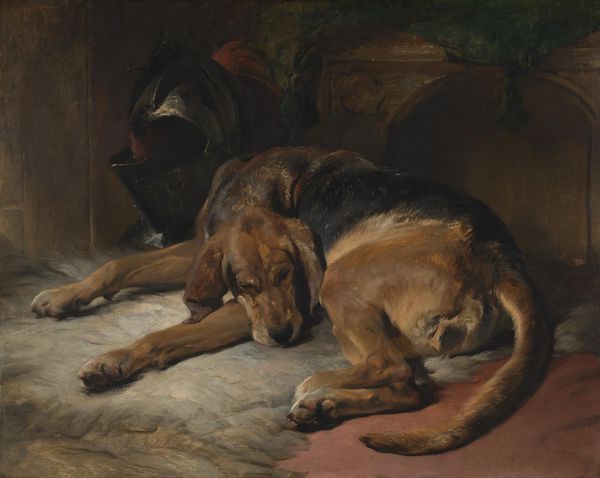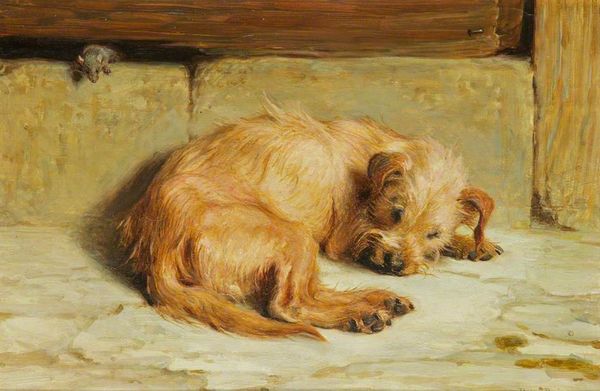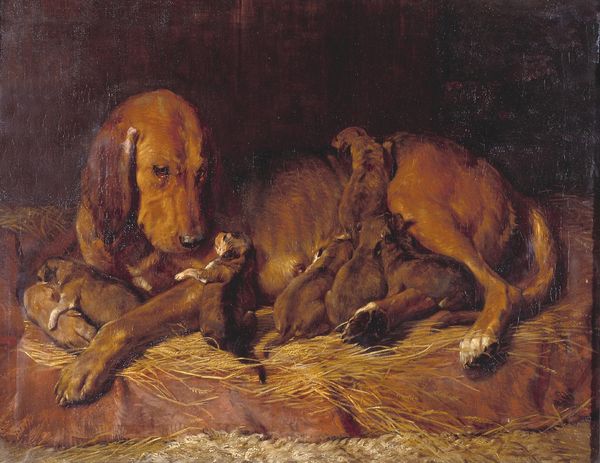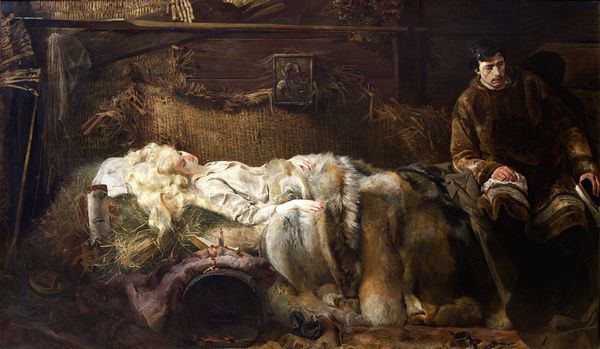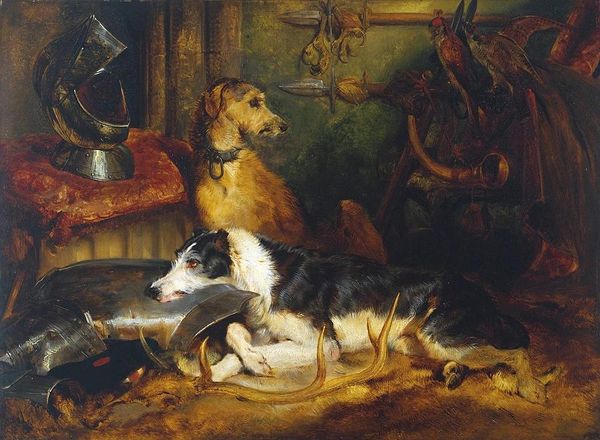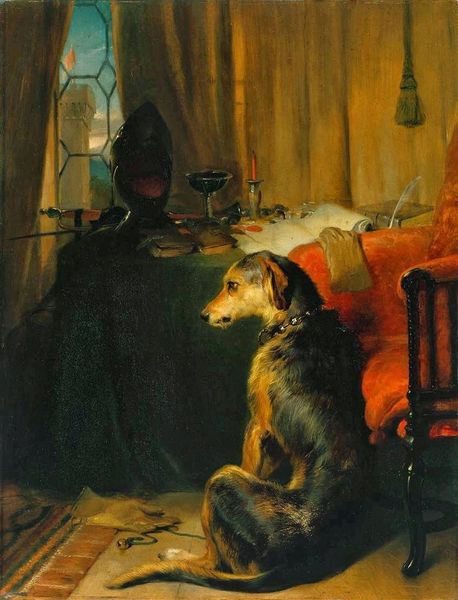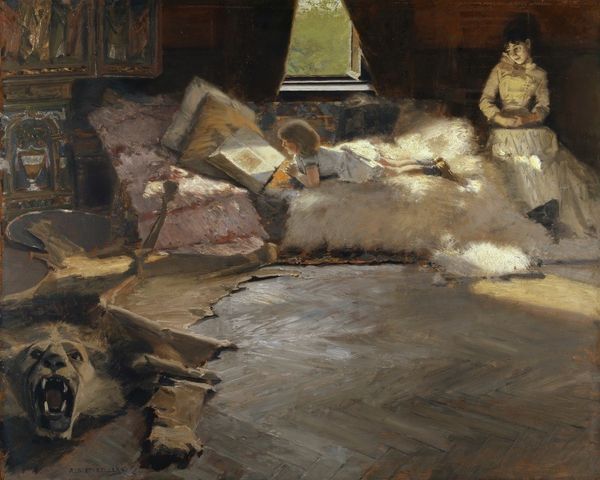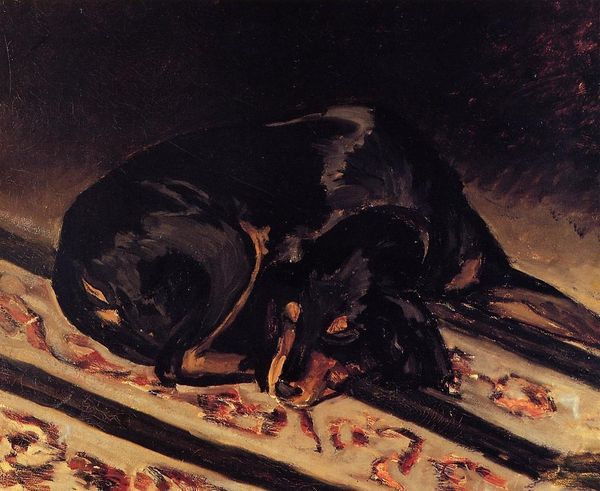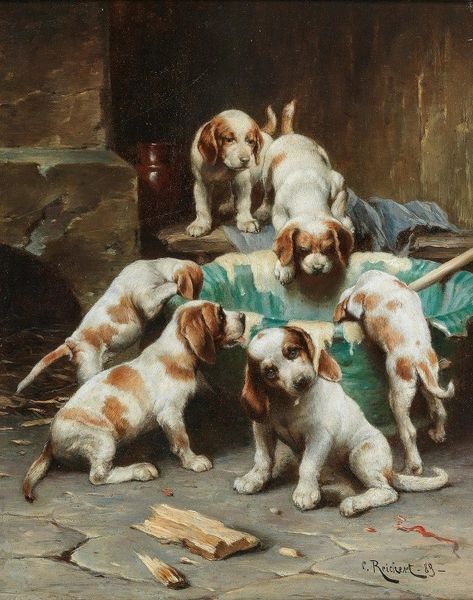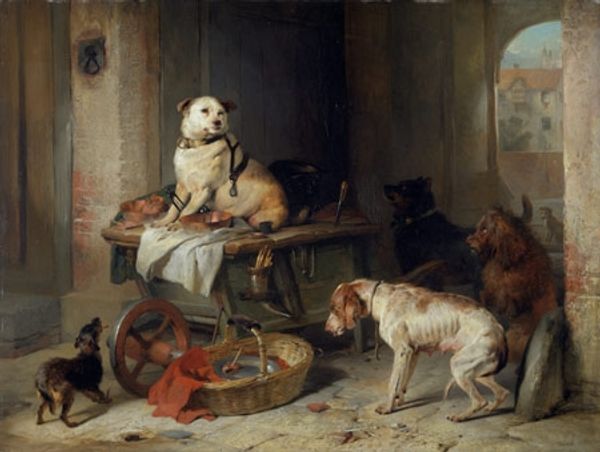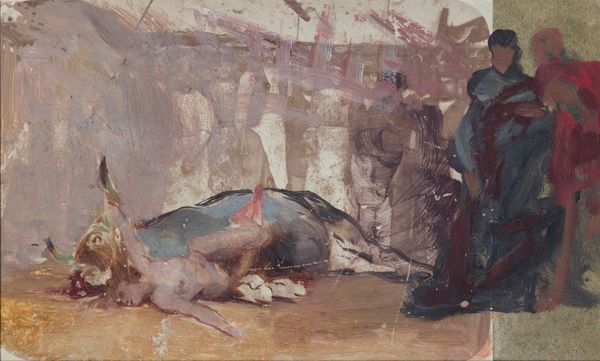
Copyright: Public domain
Editor: Here we have Briton Riviere’s "The Last of the Garrison," painted in 1875 using oil paint. It's… well, it's pretty heartbreaking. There's this huge hound, clearly exhausted, amidst debris. What emotions or historical narratives do you think Riviere was aiming to capture here? Curator: Ah, yes, Riviere. A sentimental favourite, really. Think about what it meant to be British in 1875, riding high on empire, yet haunted by loss. This isn't just a painting of a dog, it's Empire whittled down to its most loyal, grieving servant. See how the shattered crockery hints at domestic life violently interrupted? And the lone dog…the very last vestige. Did Riviere tug at heartstrings? Absolutely. But brilliantly, don’t you think? Editor: It definitely resonates. That brokenness juxtaposed with the dog's loyalty is quite potent. Is that why it was popular back then? Curator: Precisely. Queen Victoria herself was a great admirer of animal paintings that illustrated faithfulness. It affirmed Victorian values—duty, obedience, even in the face of desolation. But tell me, do *you* feel that historical context is necessary to appreciate the painting's impact today? Editor: I think so. Knowing the Victorian context adds another layer to it. Without it, it might just be a sad dog picture, and I wouldn’t think about any implications around loyalty. Curator: A 'sad dog picture' indeed, though masterfully rendered, of course! Understanding that period just heightens everything. Always question the surface, and find the deeper story being told! Editor: That makes perfect sense. It's amazing how much historical context shapes our reading of art. Curator: Indeed. Art is just a vessel for our dreams, anxieties and shared history, isn't it? Just waiting for us to dive in and explore.
Comments
No comments
Be the first to comment and join the conversation on the ultimate creative platform.
